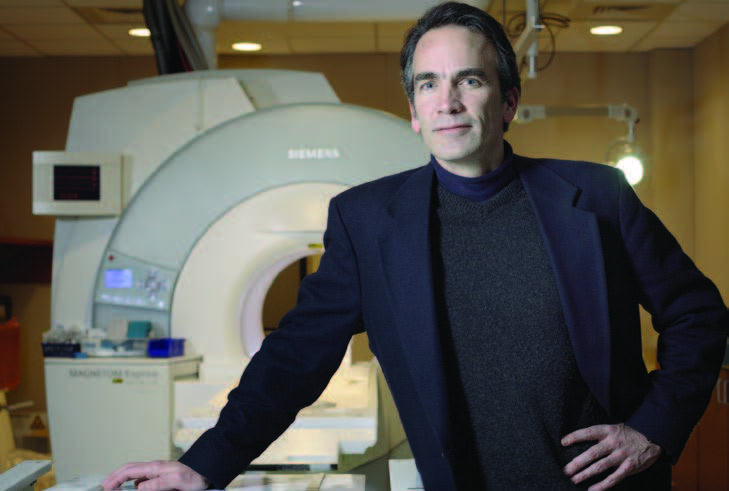
On first meeting, Elliot McVeigh’s laid-back demeanor comes through immediately. But don’t be fooled. It’s a serious kind of laid-back, an approach to life and work that should serve him well as the new Massey Professor and director of the Department of Biomedical Engineering (BME). The internationally renowned department is unique at Hopkins; it straddles the schools of Engineering and Medicine and includes close to 500 undergraduates, 140 PhD and 40 master’s students, and 25 faculty members.
Consider McVeigh’s vision for BME: “When we hire new people or admit new students, they have to be the very best. And we have to be open-minded,” he says. “They may not be the people whose research areas we were looking for when we started the process, but they have to possess superb scientific acumen. It means we have to be willing to let them lead us down new paths of excellence—maybe even ones we hadn’t thought of before.”
An inventor on 11 patents for real-time interventional MRI and real-time MRI devices, McVeigh earned his PhD in medical biophysics from the University of Toronto and began his academic career at Hopkins in 1988, when he joined the Department of Radiology. He made the shift to Biomedical Engineering at Hopkins three years later. Then, while maintaining a part-time appointment at Hopkins, McVeigh joined the National Institutes of Health in 1999 as a senior investigator in the Laboratory of Cardiac Energetics. “My recent research is in developing new imaging techniques and devices to perform therapeutic interventions under image guidance,” he explains.
When the opportunity arose to return fulltime to Hopkins and assume leadership of the rapidly growing BME Department, he jumped at the opportunity. “Who wouldn’t want this job?” McVeigh asks with a smile. “I’ve been given a fantastic starting place,” he says, noting in particular the work of the department’s earlier directors, Dick Johns and Murray Sachs, both of whom remain on the faculty as teachers and scholars. Says McVeigh, “I know that we can continue to make it even better.”
Included in the growth McVeigh expects in the next few years are two new research centers, one of which will focus on regenerative tissue sciences. “This will encourage the School of Medicine to work closely with us, sharing common ideas and solutions,” he says. The other center will establish BME as the organizing force behind Hopkins’ many medical imaging research groups, including those in radiology, cardiology, electrical and computer engineering, and oncology. “BME will be the central connection between these areas, sharing ideas and serving as a training program for our students,” he says.
Combined with the Center for Bioengineering Innovation and Design (CBID), a new student design center at the Whiting School, both of these new areas “will enable closer relationships with industry and will allow us to provide industry with the best-trained people,” McVeigh says. He adds, “It will connect BME with industry and translational research, offer our students opportunities to work with top people in industry, and continue to bridge the gap between the Homewood and the medical campuses.”




